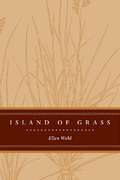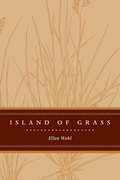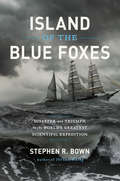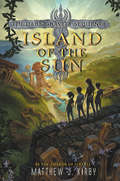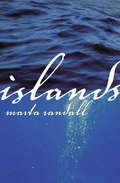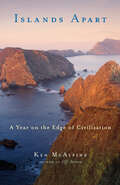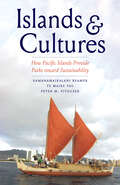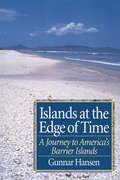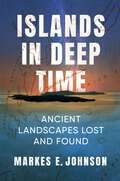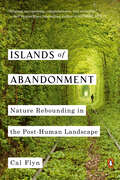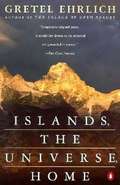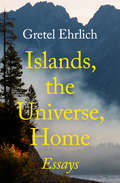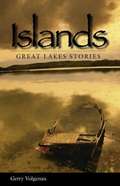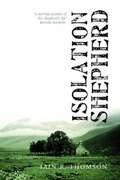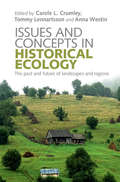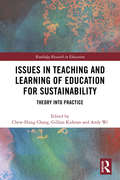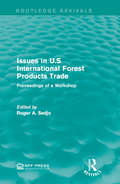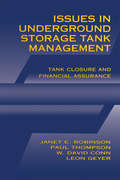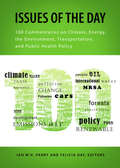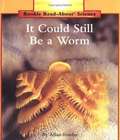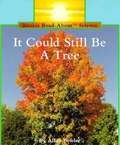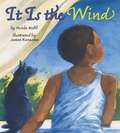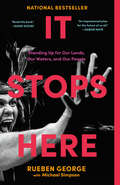- Table View
- List View
Island of Grass
by Ellen E. WohlIsland of Grass tells the story of the Cathy Fromme Prairie Natural Area, a 240-acre preserve surrounded by housing developments in Fort Collins, Colorado. This small grassland is a remnant of the once-vast prairies of the West that early European explorers and settlers described as seas of grass. Agricultural land use and urban expansion during the past two centuries have fragmented and altered these prairies. All that remains today are small islands. These remnants cannot support some of the larger animals that once roamed the prairie, but they continue to support a diverse array of plants and animals and can still teach us much about grassland ecology. Through her examinations of daily changes during walks across the Fromme Prairie over the course of a year, Ellen Wohl explores one of the more neglected ecosystems in North America, describing the geology, soils, climate, ecology, and natural history of the area, as well as providing glimpses into the lives of the plants, animals, and microbes inhabiting this landscape. Although small in size, pieces of preserved shortgrass prairie like the Cathy Fromme Prairie Natural Area are rich, diverse, and accessible natural environments deserving of awareness, appreciation, and protection. Anyone concerned with the ecology and conservation of grasslands in general, the ecology and conservation of open space in urban areas, or the natural history of Colorado will be interested in this book.
Island of Grass
by Ellen E. WohlIsland of Grass tells the story of the Cathy Fromme Prairie Natural Area, a 240-acre preserve surrounded by housing developments in Fort Collins, Colorado. This small grassland is a remnant of the once-vast prairies of the West that early European explorers and settlers described as seas of grass.Agricultural land use and urban expansion during the past two centuries have fragmented and altered these prairies. All that remains today are small islands. These remnants cannot support some of the larger animals that once roamed the prairie, but they continue to support a diverse array of plants and animals and can still teach us much about grassland ecology. Through her examinations of daily changes during walks across the Fromme Prairie over the course of a year, Ellen Wohl explores one of the more neglected ecosystems in North America, describing the geology, soils, climate, ecology, and natural history of the area, as well as providing glimpses into the lives of the plants, animals, and microbes inhabiting this landscape. Although small in size, pieces of preserved shortgrass prairie like the Cathy Fromme Prairie Natural Area are rich, diverse, and accessible natural environments deserving of awareness, appreciation, and protection. Anyone concerned with the ecology and conservation of grasslands in general, the ecology and conservation of open space in urban areas, or the natural history of Colorado will be interested in this book.
Island of the Blue Foxes: Disaster and Triumph on the World's Greatest Scientific Expedition (A Merloyd Lawrence Book)
by Stephen R. BownThe story of the world's largest, longest, and best financed scientific expedition of all time, triumphantly successful, gruesomely tragic, and never before fully told The immense 18th-century scientific journey, variously known as the Second Kamchatka Expedition or the Great Northern Expedition, from St. Petersburg across Siberia to the coast of North America, involved over 3,000 people and cost Peter the Great over one-sixth of his empire's annual revenue. Until now recorded only in academic works, this 10-year venture, led by the legendary Danish captain Vitus Bering and including scientists, artists, mariners, soldiers, and laborers, discovered Alaska, opened the Pacific fur trade, and led to fame, shipwreck, and "one of the most tragic and ghastly trials of suffering in the annals of maritime and arctic history."
Island of the Sun
by Matthew J. KirbyPerfect for fans of the Percy Jackson and Seven Wonders series, Island of the Sun is the second book in an epic, fast-paced middle grade adventure trilogy by acclaimed author Matthew J. Kirby.Eleanor and her friends have shut down the mysterious Concentrator in the Arctic, but their mission is far from over. The earth is still spinning out of its orbit and growing colder by the day. Their only chance is to find the other Concentrators embedded around the world and deactivate them before it's too late.But doing so won't be easy. The Global Energy Trust has branded Eleanor, her mother, and their friends international terrorists and is tracking their every move. The G.E.T. will stop at nothing to harness the power of the Concentrators in order to preserve the select few people its leaders deem worthy, and Eleanor is soon forced to ask herself whether it's worth risking the lives of the entire human race for a slim chance to save it.
Islands
by Marta RandallNebula Award Finalist. She will never be one of them. When the immortality treatments failed, she knew her destiny would not be as glorious and carefree as the immortals. The immortals rebuilt the Earth after the great floods, but she is not one of them, and she doesn't seem fit to live anywhere amongst them. When she finds refuge aboard the ship Ilium and begins ocean floor navigation, an adventure immortals would envy, she discovers a secret place. But she knows if she can unlock the power that the immortals lost on an island buried far beneath the land, the world and the immortals' future will never be the same again.
Islands Apart: A Year on the Edge of Civilization
by Ken McalpineAuthor Ken McAlpine stands in his front yard one night in Ventura, California, trying to see the stars. His view is diminished by light pollution, making it hard to see much of anything in the sky. Our fast-paced, technologically advanced society, he concludes, is not conducive to stargazing or soul-searching. Taking a page from Thoreau's Walden, he decides to get away from the clamor of everyday life, journeying alone through California's Channel Islands National Park. There, he imagines, he might be able to "breathe slowly and think clearly, to examine how we live and what we live for."In between his week-long solo trips through these pristine islands, McAlpine reaches out to try to better understand his fellow man: he eats lunch with the homeless in Beverly Hills, sits in the desert with a 98-year-old Benedictine monk, and befriends a sidewalk celebrity impersonator in Hollywood. What he discovers about himself and the world we live in will inspire anyone who wishes they had the time to slow down and notice the wonders of nature and humanity.To learn more about the author, visit his website at www.kenmcalpine.com.
Islands and Cultures: How Pacific Islands Provide Paths toward Sustainability
by Peter M. Vitousek Kamanamaikalani Beamer Te Maire TauA uniquely collaborative analysis of human adaptation to the Polynesian islands, told through oral histories, biophysical evidence, and historical records Humans began to settle the area we know as Polynesia between 3,000 and 800 years ago, bringing with them material culture, including plants and animals, and ideas about societal organization, and then adapting to the specific biophysical features of the islands they discovered. The authors of this book analyze the formation of their human-environment systems using oral histories, biophysical evidence, and historical records, arguing that the Polynesian islands can serve as useful models for how human societies in general interact with their environments. The islands&’ clearly defined (and relatively isolated) environments, comparatively recent discovery by humans, and innovative and dynamic societies allow for insights not available when studying other cultures. Kamana Beamer, Te Maire Tau, and Peter Vitousek have collaborated with a dozen other scholars, many of them Polynesian, to show how these cultures adapted to novel environments in the past and how we can draw insights for global sustainability today.
Islands at the Edge of Time: A Journey To America's Barrier Islands
by Gunnar HansenIslands at the Edge of Time is the story of one man's captivating journey along America's barrier islands from Boca Chica, Texas, to the Outer Banks of North Carolina. Weaving in and out along the coastlines of Texas, Louisiana, Mississippi, Alabama, South Carolina, and North Carolina, poet and naturalist Gunnar Hansen perceives barrier islands not as sand but as expressions in time of the processes that make them. Along the way he treats the reader to absorbing accounts of those who call these islands home -- their lives often lived in isolation and at the extreme edges of existence -- and examines how the culture and history of these people are shaped by the physical character of their surroundings.
Islands in Deep Time: Ancient Landscapes Lost and Found
by Markes E. JohnsonHilltops surrounded by farmland in southern Wisconsin turn out to be the eroded remnants of an ancient archipelago. An island in the Yellow Sea where Korean tourists flock is the peak of a flooded mountain rising from a drowned continental shelf. From a mountaintop shrine to Genghis Khan in Inner Mongolia, the silhouette of a Silurian seascape can be spotted. On the shores of Hudson Bay, where polar bears patrol the Arctic tundra, a close look unveils what was a tropical coastline encrusted with corals nearly 450 million years ago.The geologist Markes E. Johnson invites readers on a journey through deep time to find the traces of ancient islands. He visits a dozen sites around the globe, looking above and below today’s waterlines to uncover how landscapes of the past are preserved in the present. Going back 500 million years to the Cambrian through the Pleistocene 125,000 years ago, this book reconstructs how “paleoislands” appeared under different climatic conditions and environmental constraints. Finding vestiges of prehistoric ecologies, Johnson emphasizes the complexity of island ecosystems and the importance of preserving these significant sites.Inviting and accessible, this book is a travelogue that takes readers through time as well as space. Islands in Deep Time shares the adventure of exploring striking locations across geologic eras and issues a passionate call for their conservation.
Islands of Abandonment: Nature Rebounding in the Post-Human Landscape
by Cal FlynA beautiful, lyrical exploration of the places where nature is flourishing in our absenceSome of the only truly feral cattle in the world wander a long-abandoned island off the northernmost tip of Scotland. A variety of wildlife not seen in many lifetimes has rebounded on the irradiated grounds of Chernobyl. A lush forest supports thousands of species that are extinct or endangered everywhere else on earth in the Korean peninsula's narrow DMZ.Cal Flyn, an investigative journalist, exceptional nature writer, and promising new literary voice visits the eeriest and most desolate places on Earth that due to war, disaster, disease, or economic decay, have been abandoned by humans. What she finds every time is an "island" of teeming new life: nature has rushed in to fill the void faster and more thoroughly than even the most hopeful projections of scientists.Islands of Abandonment is a tour through these new ecosystems, in all their glory, as sites of unexpected environmental significance, where the natural world has reasserted its wild power and promise. And while it doesn't let us off the hook for addressing environmental degradation and climate change, it is a case that hope is far from lost, and it is ultimately a story of redemption: the most polluted spots on Earth can be rehabilitated through ecological processes and, in fact, they already are.
Islands, the Universe, Home
by Gretel EhrlichA collection of deeply personal essays that illuminate the relationship between the human and the natural worlds by the acclaimed author of "The Solace of Open Spaces".
Islands, the Universe, Home: Essays
by Gretel EhrlichTen essays on nature, ritual, and philosophy &“that are so point-blank vital you nearly need to put the book down to settle yourself&” (San Francisco Chronicle). Gretel Ehrlich&’s world is one of solitude and wonder, pain and beauty, and these elements give life to her stunning prose. Ever since her acclaimed debut, The Solace of Open Spaces, she has illuminated the particular qualities of nature and the self with graceful precision. In Islands, the Universe, Home, Ehrlich expands her explorations, traveling to the remote reaches of the earth and deep into her soul. She tells of a voyage of discovery in northern Japan, where she finds her &“bridge to heaven.&” She captures a &“light moving down a mountain slope.&” She sees a ruined city in the face of a fire-scarred mountain. Above all, she recalls what a painter once told her about art when she was twelve years old, as she sat for her portrait: &“You have to mix death into everything. Then you have to mix life into that.&” In this unforgettable collection, Ehrlich mixes life and death, real and sacred, to offer a stunning vision of our world that is both achingly familiar and miraculously strange. According to National Book Award–winning author Andrea Barrett, these essays are &“as spare and beautiful as the landscape from which they&’ve grown. . . . Each one is a pilgrimage into the secrets of the heart.&”
Islands: Great Lakes Stories
by Gerry VolgenauMost people are stunned to learn that there are some 35,000 islands in the Great Lakes, ranging from a large stone with its top above water level to the world's largest freshwater island, Manitoulin. Islands: Great Lakes' Stories focuses on 18 of these islands with their histories and personalities.
Isolation Shepherd
by Iain R. ThomsonIn this classic memoir of rural life in the Scottish Highlands, a shepherd chronicles his years in a remote glen before the introduction of electricity. In August 1956, Iain Thomson and his wife Betty, along with their two-year-old daughter and ten-day-old son, sat huddled in a small boat on Loch Monar in Ross-shire as a storm raged around them. They were bound for a tiny, remote cottage at the western end of the loch which was to be their home for the next four years. Isolation Shepherd is the moving story of those years. Set against the awesome splendor of some of Scotland's most spectacular scenery, Thomson's classic memoir provides a sensitive, richly detailed account of the shepherd's life through the seasons. In vivid, poetic prose, he recreates the events that shaped his family's life in Glen Strathfarrar before the area was flooded as part of a huge hydro-electric project.
Issues and Concepts in Historical Ecology
by Carole L. Crumley Tommy Lennartsson Anna WestinHistorical ecology is a research framework which draws upon diverse evidence to trace complex, long-term relationships between humanity and Earth. With roots in anthropology, archaeology, ecology and paleoecology, geography, and landscape and heritage management, historical ecology applies a practical and holistic perspective to the study of change. Furthermore, it plays an important role in both fundamental research and in developing future strategies for integrated, equitable landscape management. The framework presented in this volume covers critical issues, including: practicing transdisciplinarity, the need for understanding interactions between human societies and ecosystem processes, the future of regions and the role of history and memory in a changing world. Including many examples of co-developed research, Issues and Concepts in Historical Ecology provides a platform for collaboration across disciplines and aims to equip researchers, policy-makers, funders, and communities to make decisions that can help to construct an inclusive and resilient future for humanity.
Issues and Life Science: Ecology
by University of California at Berkeley Lawrence Hall of ScienceNIMAC-sourced textbook
Issues in Teaching and Learning of Education for Sustainability: Theory into Practice (Routledge Research in Education)
by Gillian Kidman Chang Chew Hung Andy WiIn a fast-changing, globalising world, the teaching and implementation of a curriculum for Education for Sustainability (EfS) has been a challenge for many teachers. Issues in Teaching and Learning of Education for Sustainability highlights the issues and challenges educators and academics face in implementing EfS and gives examples of what an EfS curriculum may look like and how some institutions translate the theory into practice. Organised into three parts, the volume looks at: the who (EfS for whom), the what (EfS curriculum) and the how (translating from theory to practice). The concluding chapter provides ideas and directions on where the world can proceed regarding sustainability education and how it can help in the teaching and learning of sustainability. Considering social issues such as poverty, education, health, culture and the use of natural resources, this book proposes a different path towards Education for Sustainability. Providing concrete data on the realisation of sustainable development, Issues in Teaching and Learning of Education for Sustainability will be of interest to geographers, geography educators and professionals concerned with Education for Sustainability.
Issues in U.S International Forest Products Trade: Proceedings of a Workshop (Routledge Revivals)
by Roger A. SedjoAfter World War two, the United States became integrates into the world forest economy however the complexity of their trade agreements introduced several issues which needed to be addressed by world forestry policy. Originally published in 1981, this study delves into important issues related to forest resources and trade such as the future role of the United States in the world forest economy, trade restriction and U.S log exports. This title will be of interest to students of Environmental Studies and Economics.
Issues in Underground Storage Tank Management UST Closure and Financial Assurance
by Janet E. Robinson Paul S. Thompson W. David Conn L. Leon GeyerIssues in Underground Storage Tank Management presents a comprehensive description of the many complex facets of hazardous waste management, tank closure, and site assessment. It is also the only book to cover financial assurance of UST remediation. Part I discusses UST closure including regulation, closure techniques, site assessment methods and d
Issues of the Day: 100 Commentaries on Climate, Energy, the Environment, Transportation, and Public Health Policy (RFF Report)
by Felicia Day Ian W.H. ParryIssues of the Day provides an easy way for students, academics, journalists, policymakers, and the public to learn about a diverse range of policy issues affecting the environment, energy, transportation, and public health. Each commentary gives a short assessment of a topic, summarizing in a non-technical way the current state of analysis or evidence on the issue, along with selected recommendations for further reading. The essays are written by world renowned scholars, mostly economists, and provide useful insights on policy problems that are often complex and poorly understood. Some of the topics covered include air pollution, hazardous waste, voluntary environmental programs, domestic (U.S.) and global climate policy design, fishery management, water quality, endangered species, forest fires, oil security, solar power, road and airport, fuel taxes and fuel economy standards, alternative fuel vehicles, health and longevity, smoking, malaria, tuberculosis, and the environment and development. The objective is to disseminate the findings of sound, objective research on the costs, benefits, and appropriate reform of public policies. The book provides a useful supplement for undergraduate- and graduate-level course reading, a reference guide for professionals, and a way for the general reader to quickly develop an informed perspective on the most important policy problems of the day. Issues of the Day is available to download as a PDF from the Resources for the Future website: www.rff.org/weeklycommentary
It Could Still Be A Flower
by Allan FowlerFrom friendly dolphins to giant pandas, from icebergs and glaciers to energy from the sun, from magnets to solids, liquids, and gases, Rookie Read-About Science is a natural addition to the primary-grade classroom with books that cover every part of the science curricula. Includes: animals, nature, scientific principles, the environment, weather, and much more!
It Could Still Be A Worm
by Allan FowlerFrom friendly dolphins to giant pandas, from icebergs and glaciers to energy from the sun, from magnets to solids, liquids, and gases, Rookie Read-About Science is a natural addition to the primary-grade classroom with books that cover every part of the science curricula. Includes: animals, nature, scientific principles, the environment, weather, and much more!
It Could Still Be a Tree
by Allan FowlerThe book goes through many different species of trees and identifies their discerning qualities.
It Stops Here: Standing Up for Our Lands, Our Waters, and Our People
by Michael Simpson Rueben GeorgeA personal account of one man&’s confrontation with colonization that illuminates the philosophy and values of a First Nation on the front lines of the fight against an extractive industry, colonial government, and threats to the life-giving Salish Sea.It Stops Here is the profound story of the spiritual, cultural, and political resurgence of a nation taking action to reclaim their lands, waters, law, and food systems in the face of colonization. In deeply moving testimony, it recounts the intergenerational struggle of the Tsleil-Waututh Nation to overcome colonial harms and the powerful stance they have taken alongside allies and other Indigenous nations across Turtle Island against the development of the Trans Mountain Pipeline—a fossil fuel megaproject on their unceded territories.In a firsthand account of the resurgence told by Rueben George, one of the most prominent leaders of the widespread opposition to the Trans Mountain Pipeline expansion, It Stops Here reveals extraordinary insights and revelations from someone who has devoted more than a decade of his life to fighting the project. Rueben shares stories about his family&’s deep ancestral connections to their unceded lands and waters, which are today more commonly known as Vancouver, British Columbia and the Burrard Inlet. He discloses how, following the systematic cultural genocide enacted by the colonial state, key leaders of his community, such as his grandfather, Chief Dan George, always taught the younger generations to be proud of who they were and to remember the importance of their connection to the inlet.Part memoir, part call to action, It Stops Here is a compelling appeal to prioritize the sacred over oil and extractive industries, while insisting that settler society honour Indigenous law and jurisdiction over unceded territories rather than exploiting lands and reducing them to their natural resources.
